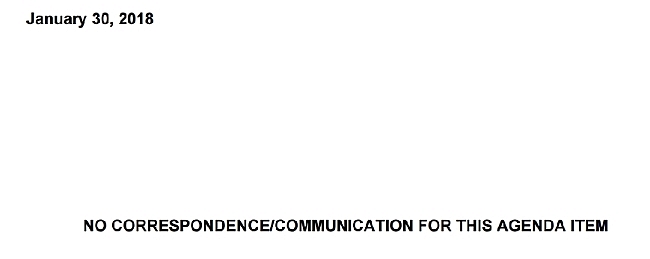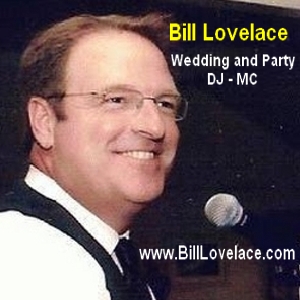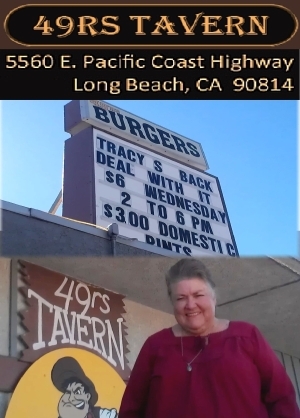Multiple grassroots organized health, clean air and community groups from L.A, to Long Beach blasted the action. Business interests, construction trade unions. SCAG [regional government body] and SCAQMD [comprised of regional elected officials] supported it. Members of the public were allowed (as usual with Metro) one minute each to speak...and there were over a 100 speakers.
Sponsor | Sponsor |
After taking a verbal pounding from about half the public speakers (one of whom explicitly said Mayor Garcia isn't working with the public and displays disrespect to the public), Metro boardmember L.A. Councilman Mike Bonin pressed on whether it's Metro staff's understanding that the motion requires staff to return to the Board before proceeding with widening the freeway (after completing "Early Action Items.") When a Metro staffer gave a less than categorical response, a Metro Boardmember [sounded like L.A. Mayor Eric Garcetti] interjected that since Metro has no funding at present to proceed with additional aspects of the project (including widening the freeway), those issues would automatically have to return to the Board for voted budget approval. [This showed that the Solis-Garcia motion was of less than major significance in having freeway widening issues return to the Board in the future.]
Councilman Bonin wasn't satisfied with that answer, or with lack of specifics in the Solis-Garcia motion, and Bonin made a friendly amendment (accepted by the motion-makers and the Board) that Metro staff return to the Board for approval of a list of the "greenlighted" early action projects "with a corresponding analysis of the safety benefits, the mobility enhancements, the air quality improvements and a displacement avoidance strategy." This significant exchange can be heard in full between 2:19 - 2:29 in our on-demand audio, linked here. L.A. County Supervisor Shiela Kuehl acknowledged that the ultimate outcome on the I-710 remains uncertain but said she is an "optimist."
Sponsor |  |
A second agendized motion co-authored by Solis and Garcia (to promote zero emission vehicles) was diluted with an acknowledgment that it would have required circulating a new EIR, which would have delayed the "early action items." (In written statements prior to the meeting (below), Solis and Garcia explicitly declined to circulate a new EIR on the project as sought by a coalition of groups in opposition.)
Metro's governing board doesn't make live video of its meetings publicly available (recorded video appears only after the board meeting is over.) LBREPORT.com made LIVE AUDIO digitally accessible (via a Metro phone line) which we fed to our Facebook page. In the public interest, LBREPORT.com has made extended audio available on-demand at this link. Our audio begins with a Metro staffer's explanation for why it recommended Alternative 5C, follwoed by Metro Boardmember comments (including Mayor Garcia), public testimony pro/con, responses of Metro Boardmembers and their vote. Our extended on-demand audio clip runs 2 hours, 49 minutes. (Periodic audible "beeps" near the end indicated our phone battery was depleting but remain operational through the votes.)
[UPDATE: Metro has subsequently uploaded video of its full meeting at this link.]
Sponsor | Sponsor |
Coalition for Environmental Health and Justice Written Statement In Opposition
CEHAJ Position on Agenda Item Nos. 5, 5.1 and 5.2 We cannot support selecting Alternative 5C -- a dirty diesel truck widening project -- as the Locally Preferred Alternative no matter how many strings and changes are made to the program. We are disappointed that after years of participating in good faith in the public process for this project, much of the negotiations and decisions on this project have taken place in the last three weeks in a very rushed and not transparent manner and without our input. We cannot support Alternative 5C because there has been a fundamental breach of trust with the consultants on this project and the agencies involved. While they were busy seeking to pain the Coalition for Environmental Health and Justice (CEHAJ) as "unreasonable," they put forward incredibly bad options for this project. We have lost all faith that these consultants can be objective and actually work with communities to implement the additional programs set forth in Agenda Items 5.1 and 5.2. We cannot support a program that seeks to sell the community short by providing for "near zero" programs. We have been clear that we want zero emissions, and all programs should be directed towards zero emissions. We cannot support a project -- even if different and smaller than Alternative 5C -- that displaces any homes, businesses or homeless serving facilities. We cannot support the failure to fully make clear that LA Metro will advance a robust local and targeted hire policy for this project, to ensure that disadvantaged and local residents obtain jobs on this project. We cannot support this project because mitigation is a complete mystery. Even if fixing interchanges is substantially smaller than widening the entire highway, this project is still amongst the largest and most expensive projects in California. Thus, impacts will be felt by corridor residents and communities. These mitigation issues were not answered in the recirculated draft EIR/EIS and they certainly are not addressed now by these motions. If the LA Metro Board wants to just undertake Early Action Projects, it should revise the EIR to study that alternative. It is not our fault that the consultants brought back no good options for the 710 project after years of work and the expenditure of billions of dollars. [Text source: Laura Cortez, Community Organizer, East Yard Communities for Environmental Justice]
In a jointly issued press release Feb. 28, Mayor Garcia and Supervisor Solis stated:
[Garcia-Solis release text]Los Angeles County Supervisor Hilda L. Solis, Long Beach Mayor Robert Garcia, Supervisor Janice Hahn, Supervisor Mark Ridley-Thomas, Inglewood Mayor James Butts, and Councilmember Ara Najarian have proposed an amendment to the staff recommendation of Alternative 5C for the I-710 South Corridor, known as Motion 5.2. Alternative 5C with proposed Motion 5.2 refinements would result in cleaner air for the communities along the I-710 Corridor, improve safety for both car and truck drivers, and make major investments in bike and pedestrian paths.
Alternative 5C will result in I-710 corridor modernization that would improve safety in and out of America's largest ports: the Port of Los Angeles and Port of Long Beach. 40% of America's goods come in and out of the twin ports. Approximately 85-90% of the Alternative 5C will be completed within the existing I-710 right of way. This alternative improves safety along the whole corridor and will create thousands of local jobs. Alternative 5C also includes numerous community benefits including bike pedestrian bridges over the LA River, a zero emissions truck program, new and enhanced transit service, and the ability to increase park space for neighboring communities.
Motion 5.2 proposes the following amendments:
- Fast tracks I-710 Early Action Program that improve interchanges, freeway crossings, and on/off ramp bottlenecks. It also supports moving forward immediately with community benefits including bike lanes, neighborhood street improvements, and pedestrian improvements.
- Requires Metro Staff to return to the Board for approval of the remainder of the project elements after completing the Early Action Program, including any widening, and to re-evaluate and revalidate the environmental documents using the most current State and local evaluation measures at that time.
- Requires Metro staff to further minimize any potential displacements, if not outright eliminate, residential, business, and sensitive land use displacements that would result from this project.
- Fast tracks near-zero and zero-emission truck deployment and on/off dock rail freight improvements.
- Asks Metro to hold an industry forum and develop a strategy for demand management.
Motion 5.2's prioritization will also advance Supervisor Solis' Motion 22.1 "Community Benefits" package, which include:
- Project Labor Agreements associated with local money for Early Action Programs
- Soundwalls
- Near zero/zero-emission truck deployment
- Air quality improvements (including air scrubbers and monitors)
- Complete Streets improvements to local streets and arterials
- New and enhanced transit service
- New and enhanced active transportation network improvements
We agree that the existing and future conditions on and near the I-710 are unacceptable and that something needs to be done; however, the No Build alternative will not improve the quality of life for our residents and those who commute on and around the I-710. The No Build alternative fails to address the purpose and need of this Project, and inaction will result in more negative impacts in our communities. With the No Build alternative, none of the air quality, mobility, or safety benefits associated with the Project would be achieved, and none of I-710's current design and operational deficiencies would be resolved.
Additionally, after 19 years and $58 million dollars spent to get us to this point, with communities along the corridor suffering from increasingly poor traffic congestion and air quality, a new EIR would only serve to set this Project back, preventing much needed improvements to our communities that desperately need them.
Motion 5.2 is the best way forward.
Statement from Supervisor Hilda Solis
"I want to thank all of our residents who have shared their comments about the future of the I-710 South Corridor. I understand there are many opinions about the proposed alternatives and that is why I have fought to ensure your voices have been heard.
Over the past 50 years, the growth of the communities along the corridor and the extensive increase in the number of trucks and cars have resulted in significant traffic delays and severe impacts on air quality-most notably throughout the vulnerable communities along the corridor.
In order to enhance safety of commuters and our residents, address traffic flow concerns, and improve the air quality in the communities along the corridor, I introduced Motion 5.2 because I believe Motion 5.2 places a strong emphasis on delivering incremental benefits over time, while minimizing impacts to local communities.
Our joint Motion 5.2 prioritizes the Early Action Program projects in Alternative 5C, ensuring our surrounding communities receive benefits from this $2.5 billion investment sooner rather than later. The I-710 Early Action Program will improve nine critical interchanges from East Los Angeles to the Port of Los Angeles and add soundwalls to reduce noise to the communities surrounding I-710, along with other comprehensive community improvements under my Motion 22.1. This motion also directs Metro to select and prioritize projects from Early Action Program that have minimum property right-of-way impacts. The implementation of these projects will take approximately 10 years and, prior to creating additional lanes on the I-710, Metro will be directed to re-assess the EIR and report to the Metro Board for further direction and prioritization.
I know that it has taken a long time to get to this point, and no one is naive in thinking that we are close to the end. When Metro selects a locally preferred alternative on March 1st, the project will be required to undergo further analysis and refinement through the project design phase, which will produce additional information on specifics such as design details, timing, construction, and program administration and implementation. In the future, the EIR will need to be updated again, and there will be more opportunities for discussion and collaboration with communities along the corridor. Soliciting and welcoming public comment will continue to remain a high priority throughout this process.
I want to thank everyone who has participated in this EIR process and shaping it through their comments. We will continue to work hard to realize a vision of a new and modern I-710 Corridor that addresses these decades-long concerns. Thank you for your patience as we move forward."
Statement from Mayor Robert Garcia
"As the gateway to America's Ports, the 710 is in great need of modernization. Almost 90% of this project is upgrading the current footprint and right-of way of the existing freeway. I know any additional widening won't eliminate congestion, but it will improve safety for motorists who struggle on the 710 with trucks coming in and out of the ports.
The amended motion will move us toward a zero emissions port to protect the health of our communities and will provide hundreds of millions of dollars for significant improvements to neighborhoods along the 710. They include the construction of the new Shoemaker Bridge, the expansion of Cesar Chavez Park, the creation of new bike and pedestrian pathways, safer on and off ramps coming in and out of Long Beach, improvements to roads and neighborhood streets along the 710, including major streets like PCH, Anaheim, Willow, Wardlow, Artesia, Del Amo, and many others.
The Long Beach City Council 710 Oversight Committee also unanimously endorsed motion 5C, and the Port of Long Beach supports the staff recommendation.
Most importantly, the amended motion will help clean the air and move us toward a zero emissions future."
The motions co-agendized by Mayor Garcia are [verbatim text]
5.2 SUBJECT: MOTION BY DIRECTORS SOLIS, GARCIA, RIDLEY-THOMAS, BUTTS, NAJARIAN, AND HAHN 2018-0068WE THEREFORE MOVE that the Board adopt Alternative 5C as the Locally Preferred Alternative for the I-710 South Corridor Project FEIR/FEIS (inclusive of Motion 22.1 from October 2015) and expedite the delivery of an Early Action Program (EAP) that emphasizes the following:
A. Projects that deliver the most immediate and significant benefits related to safety, mobility and air quality;
B. Projects that can be implemented with minimal or no displacement of residences, businesses, and sensitive land uses;
C. Developing a local/targeted hiring policy that is applicable to any and all eligible funding sources;
D. Conduct an operational performance analysis upon completion of the Early Action Program utilizing the most current State and local evaluation measures and standards to re-evaluate and re-validate the remaining elements of Alternative 5C, especially identifying opportunities to further reduce property impacts;
E. Return to the board upon completion of the aforementioned directive to seek further consideration and authorization related to implementing the balance of improvements in Alternative 5C.
FURTHER MOVE that the Board direct the CEO to establish a working group with the freight industry, air quality regulators, transportation and metropolitan planning agencies, the Gateway Council of Governments and other relevant stakeholders to explore the lead authorities, financial impact and other implementation factors related to:
A. Develop a strategic plan that is consistent with the South Coast Air Quality Management Plans, which expedites the transition from diesel freight trucks to near-zero emission vehicles as soon as possible and outlines a transition to zero-emission vehicles as the cleanest, most reliable technology becomes available;
B. Host an industry forum aimed at stimulating and accelerating the deployment of cleaner freight truck alternatives. The forum shall include, but not be limited to topics such as funding and financing, public-private partnerships, new technologies, on- and off-dock rail support facilities, best practices research and development, demonstration programs (example: rechargeable roadways), creative purchase/lease incentive programs, etc.;
C. Develop and evaluate multiple scenarios for a comprehensive congestion demand management program, to be evaluated independently, that focuses on separating freight and non-freight vehicles (i.e. dedicated toll lanes) within the existing rights of way on freeways facilities throughout Los Angeles County with priority on Near-Zero and Zero-Emission vehicles;
D. Develop an overarching transportation demand management (TDM) strategy consistent with the larger, previously approved TDM strategy development process that will minimize the impact of goods movements and people in the surrounding communities along the I-710 corridor. FURTHER MOVE that the CEO works with the Gateway Cities Council of Governments to assess the effectiveness and recommend potential improvements to the community participation structure that was established for the environmental review period. Report back to the board in 120 days.
FURTHER MOVE that, as part of its NextGen Bus Study, Metro evaluate the feasibility of implementing high-frequency bus service in accordance with Motion 22.1 (October 2015).
5.1 SUBJECT: REVISED MOTION BY DIRECTORS HAHN, SOLIS, GARCIA, AND DUPONT-WALKER 2018-0053WE THEREFORE MOVE to direct the Metro CEO and Staff to, as part of, staff recommended Locally Preferred Alternative 5c:
A. Change the Zero Emission/Near Zero Emission truck technology development program to the phased-in "Zero Emission Truck Technology Development Program."
B. Increase program funding target from $100 million to $200 million, and include in the Program incentives and grants investment in the acceleration of zero emission technology both for long hauling trucks and for freeway infrastructure, including but not limited to, "under the pavement" vehicle charging capacity as options to consider.
C. Convene a working group comprised of the California Air Resources Board (CARB), California State Department of Transportation (Caltrans), Southern California Association of Governments (SCAG), South Coast Air Quality Management District (AQMD), California Transportation Commission (CTC), the Ports of Los Angeles and Long Beach, zero-emission industry experts and other key stakeholders to develop a policy recommendation for a full, zero-emission only, dedicated lane including, but not limited to "rechargeable roadways" on the entire 19 mile long stretch of the 710 freeway, as part of the reevaluation of the remaining elements of Alternative 5c, after the Early Action Projects have been completed.
In their agendizing memo, co-agendizers Hahn, Solis, Garcia and
...There are now three alternatives for the Metro Board to choose from: "No Build", "5c" and "7." Both include a funding target of $100 million for the purchase of "Near Zero" (NZE) or "Zero” emission (ZE) trucks that would travel on the 710 corridor. Yet, according to AQMD, even taking into consideration either build alternative, "the region will need substantial additional emission reductions to attain the National Ambient Air Quality Standards." Additionally, Metro has reported that greenhouse gas tailpipe emissions would be reduced by nearly the same levels for either alternative.Dedicating the funding exclusively to "zero emission" technology once is available and requiring only ZE vehicles be allowed - once they are constructed - could improve air quality standards significantly. The technology for long haul trucks that would emit NO poisonous fumes is emerging quickly, as exhibited by leading auto manufacturers such as Tesla and Daimler AG. Freeways in China, Israel and Norway are being constructed to have electric chargers embedded under the pavement, thus enabling electric vehicles - both cars and long haul trucks - to charge their batteries as they are moving. This significant investment by Metro can be a game-changing accelerator of "zero emission" technology, eliminating the need to subsidize "near zero" emission vehicles.
The future 710 freeway must not be a "diesel death zone" but a corridor where freight can be moved quickly without impairing the health of communities alongside the 710 Freeway. Both can be achieved.
Mayor Garcia didn't mention the major LB-impacting project during his mid-January 2018 "State of the City" message. About two weeks later, the LB City Council's "I-710 Oversight Committee" (which doesn't have project approval power but consists of three LB Councilmembers [Uranga, Austin and Richardson] with districts along LB's 710 corridor) scheduled a
The Council Committee provided no online agenda materials for public review prior to its meeting (screen save below as of 10:30 a.m. on the meeting date) and meeting materials didn't materialize online until after the Committee was over.

Source: I-710 Oversight Committee meeting agenda slide, Jan. 30, 2018, visible prior to meeting to select "locally preferred alternative" for I-710 project
Materials belatedly visible online show the City of Long Beach submitted October 17, 2017 written comments voicing concern over aspects of the project's EIR, which can be viewed here.
Written materials also include opposition to Alternatives 5C and 7 in a letter dated January 25, 2018 by the Coalition for Environmental Health and Justice to the Gateway Council of Governments (on which Councilman Austin is LB's representative.) The group's letter can be viewed here.
The group's opposition focused on zero emissions ("Our communities deserve a project that advances zero emissions in a meaningful way, not just a project that widens the road and hopes zero emissions technology will come. A mandatory zero emissions corridor or lanes is a critical component to any project"); displacement ("We remain deeply opposed to the project displacing homes and homeless facilities. The consultants must do a better job in designing a project that protects these vital resources") and targeted hiring (including a "project labor agreement") It also faulted the project's environmental review process for not putting out a preferred alternative during the environmental review process and then "rushing to select an alternative shortly thereafter."
The group's letter urged rejection of Alternatives 5C and 7 and asks that the project team address the issues in its letter and revise and recirculate the project's environmental documents accordingly. .
At the Jan.30 Committee meeting, Metro reps presented a Power Point presentation (obviously prepared in advance and belatedly visible here) and recommended Alternative 5C (ten freeway lanes at a cost of roughly $6 billion) over Alternative 7 (with an elevated four lane "Clean Freight Corridor" at a cost of roughly $11 billion.) Both alternatives involve taking 100+ homes and businesses for onramp/off-ramp upgrades.
Metro's rep told the Council Committee that the Metro "project team" recommended Alternative 5C as the "Locally Preferred Alternative" on grounds it would accomplish the agency's stated purpose and need of the project, offers a number of benefits, and has fewer impacts than Alternative 7. Metro's rep told the Committee that although full funding for Alternative 5C isn't "currently available," Metro and Caltrans have sufficient funding to support accelerated implementation of its initial stages (Early Action Projects) while additional funding "becomes available." The Committee was told that Alternative 5C can be constructed in stages while Alternative 7's benefits are associated with a proposed Freight Corridor that can't be constructed in stages that would have independent utility.
A number of residents and grassroots groups testified in opposition to Alternative 5C with several urging the Council Committee to recommend that Metro halt the project's advance and re-work it to focus to a greater extent on health and community benefits.
- To hear the public's testimony, click here.
- To hear the three Councilmembers' responses (in order: Uranga, Austin and Richardson) prior to their vote support Alternative 5C, click here
In colloquy with a Metro rep, Committee member/Vice Mayor Richardson said [paraphrase] he views the project as an opportunity to correct a chronic NLB injustice in the current configuration of the 710/91 interchange which leaves some adjoining land areas "land locked." He also voiced concern that the project's "Early Action" items north of downtown receive the same priority as downtown LB area items (which include the Shoemaker bridge entryway to downtown LB.) Richardson ultimately incorporated his concerns in the motion as made by Committee member Austin, seconded by chair Uranga, which was:
A motion was made by Member Austin, seconded by Chair Uranga, to approve recommendation to support alternative 5C and further study: [1] the I-91 and I-405 interchanges with the I-710 with intention of highest and best use of land locked parcels; and [2] early action projects for the interchanges dispersed throughout the City, specifically to include certain areas on the map are included in City's official request for early action projects further north of the Shoemaker Bridge are included with the same emphasis that have been highlighted with the Shoemaker Bridge.
The Council Committee's motion carried
blog comments powered by Disqus
Recommend LBREPORT.com to your Facebook friends:
Follow LBReport.com with:
RSS |
Contact us: mail@LBReport.com





Hardwood Floor Specialists
Call (562) 422-2800 or (714) 836-7050
